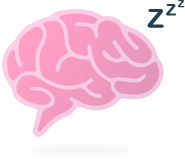Home
Cognitive Ease definition
Cognitive ease or fluency is the measure of how easy it is for our brains to process information. The Cognitive ease associated with something will alter how we feel about it and whether we are motivated to invest our time and effort in it. The Nobel prize-winning Economist Daniel Khahneman explains in his book Thinking, Fast and Slow (2011) that our brains have two modes of thinking: the first that operates automatically and quickly, with little or no effort and no sense of voluntary control, and a second system that pays more conscious attention to information presented, especially in the case of that which demands more cerebral effort such as complex calculations for example.
When cognitive ease diminishes, because the mental effort required is too much or too complex, we engage this second system of “effortful mental activity” and switch to a state of cognitive strain. The Cognitive ease principle reveals that when people have to switch to the second system of thinking, causing cognitive strain, they become more vigilant and suspicious. It results in a decrease in confidence, trust and pleasure involved in completing the mental action. In other words, people are happier and more receptive towards familiar and easily understandable situations in which they feel safer, more confident and at ease.
For example, when shopping during a sale, the way the prices are marked up will greatly affect people’s attitude and interaction with the products (and the likelihood of purchases being made). If the sale prices are easy to understand using percentages (simply “- 50%” for example) or with the new sale prices already calculated for you (“now 20 pounds only” for example), then shopper’s brains will react in an automatic and positive fashion. However, if it’s necessary to work out a complex mental calculation to understand what the offer is (for example, working out what 12% off £27.28 would be) then the brain will switch to the “second system of thought”. This means that we will pay more attention to the calculation and therefore the real benefits of the offer and start questioning whether it is actually a good deal or not, whether you really need another pair of shoes, etc. The more cerebral effort we demand from our customers, the more of a negative and suspicious reaction we will automatically evoke.
The Cognitive ease principle has many applications in marketing. For example, psychological studies have found that shares in companies with easier-to-pronounce names perform better than those with difficult-to-pronounce names. In online marketing, any possible elements that can simplify a website should be used: infographics, intuitive web design, easy-to-read font, and so on.

Oops, you have reached your limit of 1 free tactic per hour
To get unlimited access to our 250+ tactics,
Join our FREE mailing list
Or wait 00:59:59





